Rehabs and Restorations - Tobacco Row - Lancaster Leaf Tobacco Co. Inc.
Words: Dan Kamys
Case Study: Rehabs and Restorations
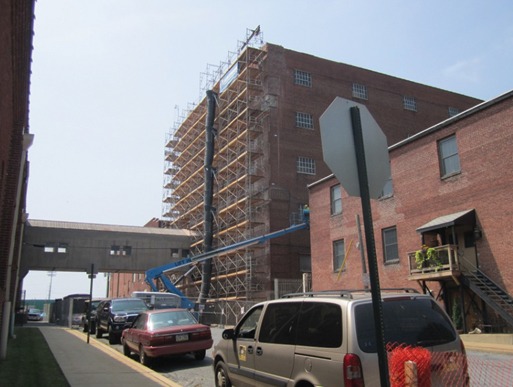
Faced with the possibility of moving its deteriorating 230,000-square-foot tobacco curing and processing complex in 2009, the Lancaster Leaf Tobacco Co. Inc. in Lancaster, Pa., embarked on an $11.5 million expansion and restoration project to modernize its operation and save nearly 120 jobs. A subsidiary of Universal Corp., Lancaster Leaf’s revitalization advancements are poised to make it one of North America's largest processors of dark, air-cured tobacco and stimulate job growth in the region’s future.
Suspect super structure
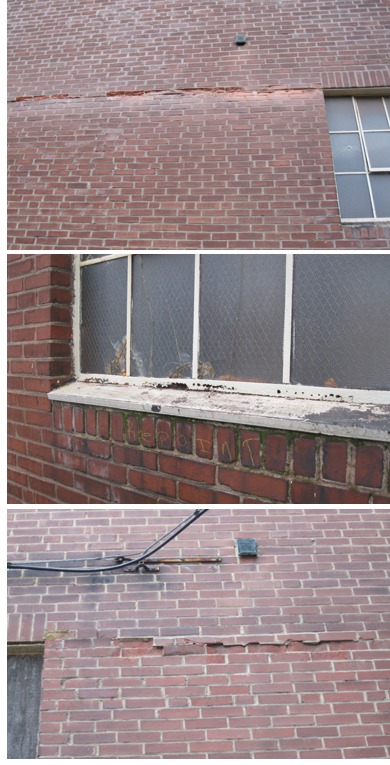 As part of this renovation, many of the early-1900s tobacco warehouse structures at the Pitney Road complex are being preserved, rather than replaced, including the recent structural restoration of a five-story warehouse on the southwest corner of the campus. Notably, a 40- X 50-foot section on the east elevation of the warehouse had collapsed in the summer of 2011. Immediately, a detailed inspection was done on the remaining masonry fa??ade by Caretti Restoration & Preservation Services Inc., Camp Hill, Pa., to determine the best implement of repair for the severe structural issues.
As part of this renovation, many of the early-1900s tobacco warehouse structures at the Pitney Road complex are being preserved, rather than replaced, including the recent structural restoration of a five-story warehouse on the southwest corner of the campus. Notably, a 40- X 50-foot section on the east elevation of the warehouse had collapsed in the summer of 2011. Immediately, a detailed inspection was done on the remaining masonry fa??ade by Caretti Restoration & Preservation Services Inc., Camp Hill, Pa., to determine the best implement of repair for the severe structural issues.
The inspection revealed that a triple wythe of bricks was coming apart, and the header courses that tied the walls together were not intact. Deterioration occurred, because it was a concrete superstructure with brick infill that expands when it gets wet, pulling the concrete apart versus a steel-based superstructure.
Synergistic system solution
To avoid the costly and time-consuming replacement and reinstallation of the damaged concrete superstructure, Caretti Restoration’s GM/VP, Bob Gensel, enlisted industrial masonry repair reinforcement system manufacturer Helifix Inc., Streetsboro, Ohio. Helifix would implement a strategic combination of its Crack Stitch and DryFix systems in early-October of 2011.
Helifix’s Crack Stitch system was used, predominantly, for repairing vertical cracks on the building’s corners. This would solve key structural concerns and address aesthetics. Helifix’s Dryfix remedial pinning and tying system was used for tying the wythes of bricks to the walls, and for repair of the corroding, loose and missing steel shelf angles supporting the brick veneer for the warehouse’s damaged areas.
DryFix
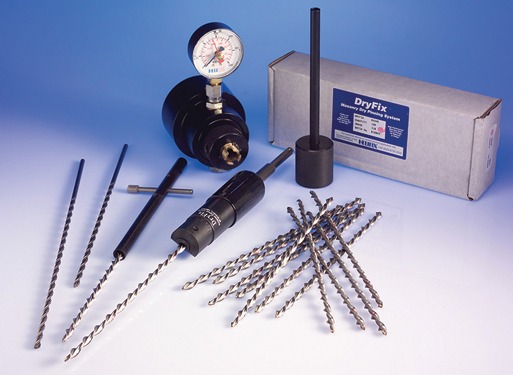
About 6,400 DryFix helical anchor ties were used throughout key focus areas of the tobacco warehouse’s north, south and west elevations. Also, roughly 1,800 lineal feet of shelf angles were repaired using the system at a 3.5- x 3.5-inch angle for every floor at the top of the windows to support the brick masonry above.
Helifix’s patented DryFix Remedial Pinning and Tying System provides a retrofit connection between all commonly used building materials. The DryFix helical ties (stainless steel; grade 304 or 316) are made from a drawn stainless-steel manufacturing process that creates the helical hi-fin design, more than doubling the proof stress. With its relatively small diameter, the system provides substantial tensile properties to the concrete.
Ideal cavity and solid masonry constructions, the DryFix system requires no special grouts, resins or mechanical expansion, and is embedded within the existing masonry to be fully concealed once installed.
Crack Stitch
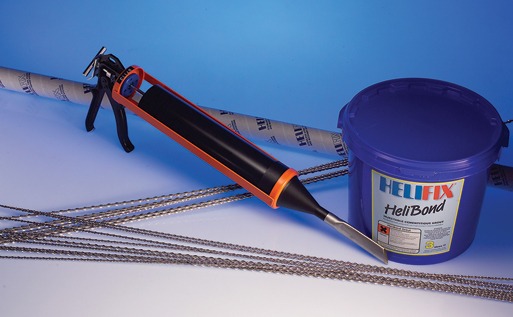
About 300 lineal feet of HeliBar were used to repair vertical cracking in the brick masonry for numerous focus locations of the tobacco warehouse. Helifix’s Crack Stitching system is a means of permanent crack repair designed for restoring the structural integrity and permanent repair of older cracks.
The system allows contractors to repair and redirect stresses on damaged masonry areas and create a monolithic point to distribute loads. This is achieved by combining stainless-steel (austenitic grade 304) HeliBar reinforcement rods with injectable, non-shrink cementitious HeliBond grout, producing a high compressive strength.
Once installed to the channeled-out mortar beds, the HeliBar rod’s hi-fin design delivers substantial axial strength, while providing flexibility across the crack to accommodate natural building movement.
Because both the Crack Stitch and DryFix systems are installed into the existing masonry, expensive and time-consuming tear down and rebuild were avoided, while the visual aesthetics of the structure were retained. This effective combination made the systems ideal for the Lancaster Leaf Tobacco Co.’s structural warehouse restoration project.
Installation
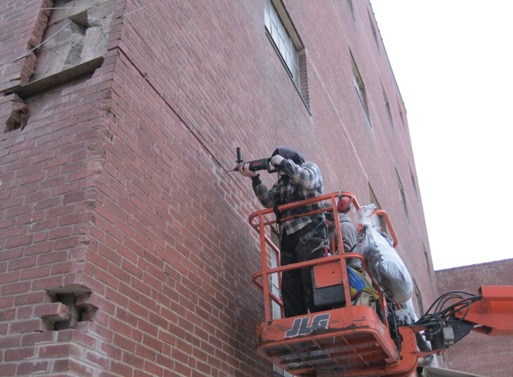
Helifix’s Crack Stitch and DryFix systems’ installation procedures were advantageous – given the inclement fall- and winter-weather restoration schedule for Lancaster Tobacco’s warehouse – since most mortar installations can’t be done in colder months.
DryFix installation involves simple power-driving of the slim-profile remedial ties into position via a small pilot hole. A special installation tool then is used to leave the end of the tie recessed below the outer face to allow an “invisible” finish. High-performance Helifix polymer grout was used in key areas to help increase the bond.
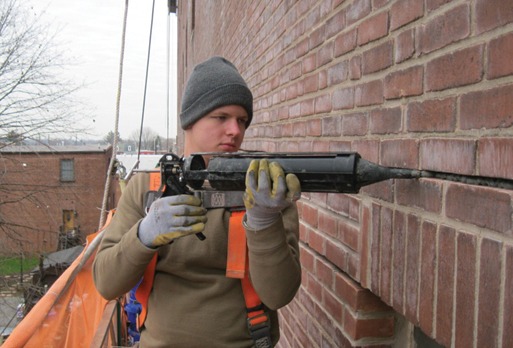
Crack Stitch installation involves cutting/raking out slots in the mortar beds (minimum 20-inch on either side of the crack), which then are vacuumed and flushed out with water. A Helifix pointing gun is used to inject a bead of thixotropic cementitious HeliBond grout along the back of the slot. Using a brick jointer, a one-meter length of HeliBar is pushed into the grout to obtain good coverage.
A further bead of HeliBond is inserted over the exposed HeliBar, finishing a half-inch from the face and “ironed” into the slot using the brick jointer. The recessed HeliBar is pointed over the top, rendering it virtually transparent to the naked eye upon completion.
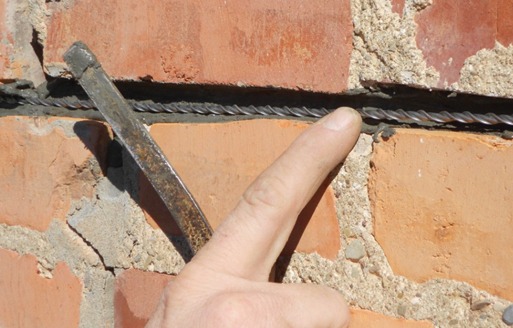
Tobacco warehouse results
With the combined use of Helifix’s concealed, non-disruptive Crack Stitch and DryFix systems, the completion of the restoration of the Lancaster Leaf Tobacco Co. was completed on schedule in January 2012.
Implementation of the same dynamic repair combination is planned for additional buildings on the Lancaster Leaf Tobacco campus.
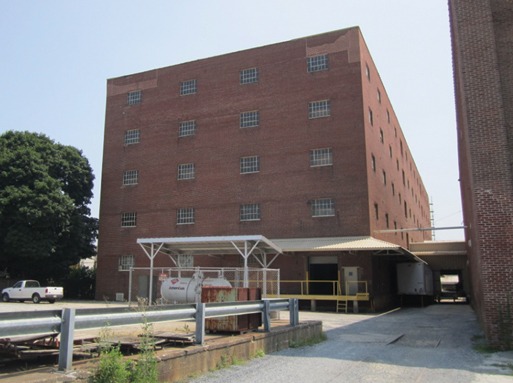
Chris Devitry, construction manager for the project’s general contracting firm, Benchmark Construction Co. in Brownstown, Pa., noted the combined system’s cost-efficiency: “The savings on shelf angle repair, alone, was significant as the per-window/per-foot cost was about one-third less than other methods.”
According to Caretti Restoration’s GM/VP, Bob Gensel, “You don’t often have a complete wall collapse on a masonry fa??ade, so this represented pretty severe structural deterioration. Ultimately, combining Helifix’s Crack Stitch and DryFix systems was the ideal alternative to complete structural tear down and rebuild of the Lancaster Leaf Tobacco Co.’s warehouse.”
Return to Table of Contents